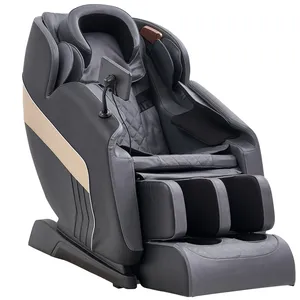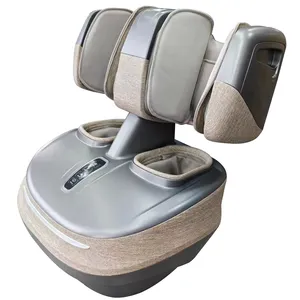Phổ biến trong ngành của bạn






Tooljoy Nhà máy cung cấp PH2 bit tác động từ tuốc nơ vít Bit cho mũi khoan
6.369 ₫ - 8.916 ₫
Đơn hàng tối thiểu: 100 Cái







Tricone khoan bit 1 mét kim cương khoan bit carbide cho kim loại
7.641.712 ₫ - 10.188.949 ₫
Đơn hàng tối thiểu: 1 Bộ




Douruy Hot Bán chất lượng tốt phay Cutter CNC bits Router bits
25.473 ₫ - 152.835 ₫
Đơn hàng tối thiểu: 10 Cái




Tricone Bit Nhà Máy Đá Khoan TCL Bit Nước Giếng Khoan TCI Tricone Bits
7.641.712 ₫
Đơn hàng tối thiểu: 1 Cái







SPM cir 90/90mm/3 inch dth búa/Áp Suất Không Khí Thấp Khí Nén DTH Búa và nút mũi khoan đá
Sẵn sàng vận chuyển
3.693.494 ₫ - 4.024.635 ₫
Đơn hàng tối thiểu: 1 Cái
Vận chuyển mỗi chiếc: 2.479.991 ₫


32 34 36 38 40 42 mét Khoan Đá Taper Shank Khoan Đá Jack Búa Bit Tungsten Carbide Nút Khí Nén đạn đạo Khoan Bits
165.571 ₫ - 662.282 ₫
Đơn hàng tối thiểu: 10 Cái






COP DHD Nhiệm Vụ SD QL IR Áp Suất Không Khí Cao Khí Nén Khoan DTH Nút Bit
2.037.790 ₫ - 7.641.712 ₫
Đơn hàng tối thiểu: 1 Cái






Mũi Khoan Chất Lượng Tốt Nhất Cho Đá Cứng 32Mm 34Mm 36Mm 38Mm 40Mm 42Mm Máy Khoan Đá Khí Nén Mũi Khoan Búa Khoan Đá
132.457 ₫ - 147.740 ₫
Đơn hàng tối thiểu: 1 Cái




Hongwuhuan 3.5inch Khí Nén Khai Thác Mỏ DTH Khoan Va Chạm cho 90-110mm khoan bit
5.094.475 ₫
Đơn hàng tối thiểu: 1 Cái






Mũi Khoan Nút 32Mm 34Mm 36Mm 38Mm 40Mm Cho Máy Khoan Đá Mũi Khoan Khai Thác Mỏ Phụ Kiện Khí Nén Thanh Chuôi
50.945 ₫
Đơn hàng tối thiểu: 100 Cái
Các tìm kiếm liên quan:






Nhà máy bán trực tiếp 30mm tungsten carbide giảm dần chise khoan bit cho khí nén Jack búa
68.521 ₫ - 75.144 ₫
Đơn hàng tối thiểu: 100 Cái






Công cụ khoan đá khí nén DTH búa Bit khoan bit DTH bit cho khai thác than
2.547.238 ₫ - 8.482.300 ₫
Đơn hàng tối thiểu: 1 Cái










HENGWANG khí nén tác động khoan 12 inches DTH búa khoan bit
76.391.644 ₫ - 101.864.016 ₫
Đơn hàng tối thiểu: 1 Bộ






Panda thiết bị nút bit Mài khai thác mỏ khoan bit Mài máy hướng dẫn sử dụng khí nén nút bit Máy mài
13.755.081 ₫ - 14.773.976 ₫
Đơn hàng tối thiểu: 1 Bộ






Nhà Máy Giá cả hợp lý khí nén các bộ phận khoan đá đục bit để bán
84.059 ₫ - 91.701 ₫
Đơn hàng tối thiểu: 100 Bộ






Sinodrills đa chức năng 7/11/12 độ côn nút khoan bit cho y24 khí nén Jack búa
219.063 ₫ - 249.630 ₫
Đơn hàng tối thiểu: 1 Cái






50 mét cầm Tay Khí Nén rock mm khoan đục bits K50-724
1.299.091 ₫ - 1.311.828 ₫
Đơn hàng tối thiểu: 1 Cái






Ql40, ql50, ql60, ql80 không khí cao pessure DTH khí nén búa khoan bit
7.641.712 ₫
Đơn hàng tối thiểu: 1 Cái






Chuyên Nghiệp Khoan Que Máy Xay Khí Nén Bit Máy Khoan Nút Bits Không Khí Mài Công Cụ Agm18 Với Giấy Chứng Nhận CE
165.570.418 ₫
Đơn hàng tối thiểu: 1 Bộ

Đá lỗ khoan DHD340A-115 khí nén tungsten carbide DTH búa Nút khoan bit cho nước tốt
4.867.771 ₫ - 4.918.716 ₫
Đơn hàng tối thiểu: 1 Cái




Feida Mũi Khoan 152/165/171/190/203Mm Mũi Khoan DTH Cho Thiết Bị Khoan Khí Nén, Hệ Thống Khí Nén, Giá Thấp
6.877.541 ₫
Đơn hàng tối thiểu: 1 Cái






Đầu Tuốc Nơ Vít Hình Chữ Y Cứng 1/4 "Chuôi Lục Giác S2 Mũi Khoan Chữ Y Khí Nén Ba Mũi Mận Hình Tam Giác
Sẵn sàng vận chuyển
6.369 ₫ - 11.463 ₫
Đơn hàng tối thiểu: 100 Cái
Vận chuyển mỗi chiếc: 7.133 ₫






Mở hố đá khoan răng đường kính 154 mét bit khí nén nút hình cầu 6 "DTH búa dhd360 Shank bits với van
6.495.455 ₫ - 6.622.817 ₫
Đơn hàng tối thiểu: 1 Cái






Xingda cao khí nén chất lượng khí nén khoan bit nước giếng DTH nút bit
2.547.238 ₫ - 3.820.856 ₫
Đơn hàng tối thiểu: 1 Cái
















Búa DTH Hàng Đầu Búa Khoan Điện Mũi Khoan Búa Khoan Khí Nén Xoay Lỗ Sâu Áp Suất Không Khí Thấp
1.273.619 ₫ - 2.521.765 ₫
Đơn hàng tối thiểu: 1 Cái






Nhà Máy Bán Hàng Trực Tiếp Tungsten Carbide Khoan Bits Rock Khoan Khí Nén Khoan Bit Với Giá Thấp
83.550 ₫ - 88.899 ₫
Đơn hàng tối thiểu: 50 Hộp






Hot Bán Khoan Đá Và Nước Cũng Khoan Khí Nén DTH Odex Lập Dị Vỏ Khoan Bit
6.622.817 ₫ - 16.557.042 ₫
Đơn hàng tối thiểu: 1 Cái






140mm 143 Carbide lõi bit RC búa bit Blast lỗ khoan lưu thông ngược bit khí nén pr52 Shank
10.418.201 ₫ - 10.571.035 ₫
Đơn hàng tối thiểu: 1 Hộp






Móng ngựa đục 26mm 28mm 32mm 34mm 36mm 38mm 40mm 42mm 43mm khí nén đá khoan bit
71.323 ₫ - 103.164 ₫
Đơn hàng tối thiểu: 1 Cái






Atlas 7 PDC giảm dần khoan que z708 108 * H22 11 12 độ hình lục giác khoan thép cao su giảm dần nút bit cho đá ở Nam Mỹ
50.691 ₫ - 322.481 ₫
Đơn hàng tối thiểu: 1 Cái






Áp Suất Không Khí Thấp CIR90 DTH Hammer
Sẵn sàng vận chuyển
5.858.646 ₫ - 7.386.988 ₫
Đơn hàng tối thiểu: 1 Bộ
Vận chuyển mỗi chiếc: 2.978.485 ₫












Khai thác mỏ đá giảm dần Đồng khoan bit cho các công trình xây dựng đầu búa khoan đá bit H22 7 độ côn Bit khoan
48.398 ₫ - 178.307 ₫
Đơn hàng tối thiểu: 1 Cái






Giảm dần khoan bit khai thác đá khai thác mỏ và trôi đầu búa khoan công cụ và khoan bit
45.851 ₫ - 254.724 ₫
Đơn hàng tối thiểu: 1 Cái





Công cụ khoan đá Granite 6 inch ql60 165mm 178mm 191mm 203mm mũi khoan
254.724 ₫ - 10.188.949 ₫
Đơn hàng tối thiểu: 10 Cái
Các danh mục hàng đầu
Giới thiệu về mũi khoan khí nén
Ngày nay, mũi khoan khí nén không còn là điều mới mẻ đối với những người bình thường và không còn bị coi là điều cấm kỵ khi sử dụng. Nếu bạn đang tìm kiếm niềm vui áp chót đó, bạn phải kiểm tra sự bao la. Bộ sưu tập mũi khoan khí nén tại Alibaba.com. Những gợi cảm và cong. mũi khoan khí nén đáng giá từng xu và chắc chắn làm cho đêm đó trở nên đặc biệt đối với bạn. Những con búp bê này có ngoại hình giống như thật, bắt đầu từ tóc đến ngón chân theo mọi nghĩa.
Cho dù bạn là một người cô đơn đang tìm kiếm một người bạn đời như cuộc sống hay một cặp vợ chồng muốn thêm gia vị cho cuộc sống của họ, bạn đều có thể sử dụng chúng . mũi khoan khí nén để đốt cháy ngọn lửa đó. Những ngoạn mục. mũi khoan khí nén có thể tùy chỉnh theo mong đợi của bạn. Những điều tuyệt vời. mũi khoan khí nén có sẵn ở cả phiên bản dành cho nam và nữ và được làm từ silicone cấp y tế để sử dụng an toàn. Hãy sở hữu ngay bây giờ và tận hưởng một đêm đam mê và cháy bỏng.
Alibaba.com cung cấp những điều tuyệt vời này. mũi khoan khí nén ở mọi hình dạng cơ thể, kích thước và sắc tộc. Dù yêu cầu của bạn đối với. mũi khoan khí nén, bạn có thể tải tất cả chúng trên trang web. Những cái này. mũi khoan khí nén được tạo hình bởi những người thợ thủ công giỏi nhất và mọi chi tiết phức tạp đều được kiểm tra kỹ lưỡng. Những con búp bê này có mắt, tóc, móng tay và tất cả các bộ phận cơ thể khác tương tự như người thật.
Alibaba.com cung cấp nhiều loại. mũi khoan khí nén có thể giúp bạn mua các sản phẩm phù hợp với ngân sách và các yêu cầu khác của bạn. Các sản phẩm này an toàn để sử dụng, được chứng nhận và thân thiện với môi trường trong tự nhiên. Đơn đặt hàng OEM có sẵn trên các sản phẩm này.
Cho dù bạn là một người cô đơn đang tìm kiếm một người bạn đời như cuộc sống hay một cặp vợ chồng muốn thêm gia vị cho cuộc sống của họ, bạn đều có thể sử dụng chúng . mũi khoan khí nén để đốt cháy ngọn lửa đó. Những ngoạn mục. mũi khoan khí nén có thể tùy chỉnh theo mong đợi của bạn. Những điều tuyệt vời. mũi khoan khí nén có sẵn ở cả phiên bản dành cho nam và nữ và được làm từ silicone cấp y tế để sử dụng an toàn. Hãy sở hữu ngay bây giờ và tận hưởng một đêm đam mê và cháy bỏng.
Alibaba.com cung cấp những điều tuyệt vời này. mũi khoan khí nén ở mọi hình dạng cơ thể, kích thước và sắc tộc. Dù yêu cầu của bạn đối với. mũi khoan khí nén, bạn có thể tải tất cả chúng trên trang web. Những cái này. mũi khoan khí nén được tạo hình bởi những người thợ thủ công giỏi nhất và mọi chi tiết phức tạp đều được kiểm tra kỹ lưỡng. Những con búp bê này có mắt, tóc, móng tay và tất cả các bộ phận cơ thể khác tương tự như người thật.
Alibaba.com cung cấp nhiều loại. mũi khoan khí nén có thể giúp bạn mua các sản phẩm phù hợp với ngân sách và các yêu cầu khác của bạn. Các sản phẩm này an toàn để sử dụng, được chứng nhận và thân thiện với môi trường trong tự nhiên. Đơn đặt hàng OEM có sẵn trên các sản phẩm này.























